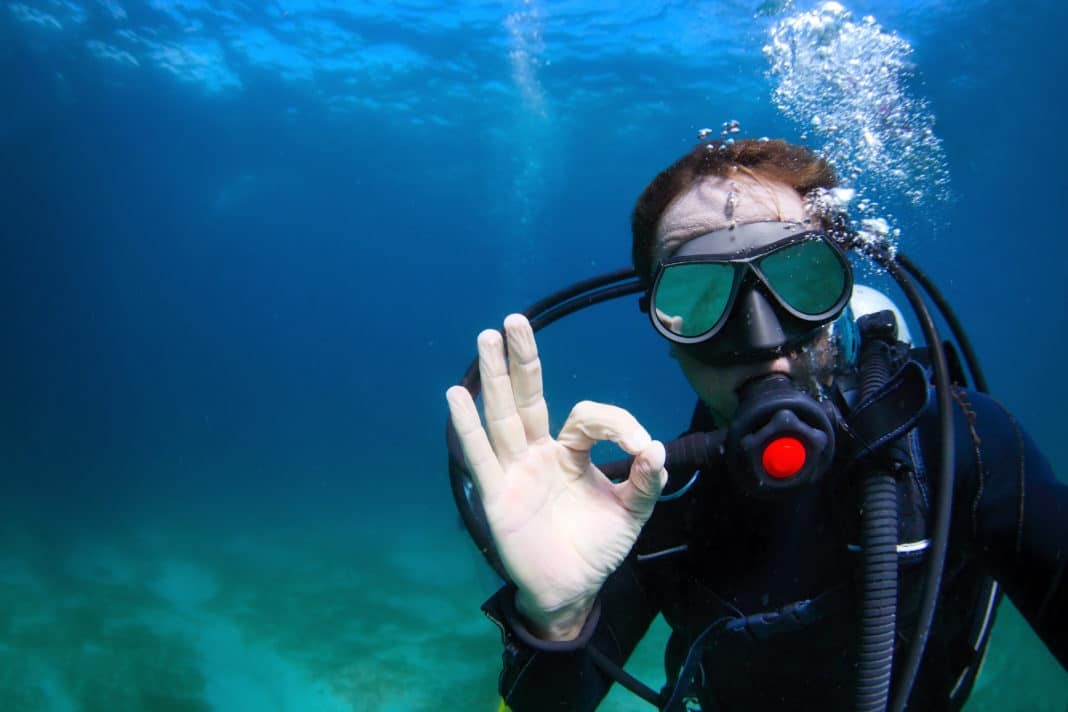While the dive industry is currently clawing its way back from the ongoing COVID-19 pandemic, there’s no denying that it helps play a pretty substantial role in the U.S. marine economy.
The USA’s marine economy, including goods and services, contributed a total of about US$373 billion (~315 billion Euros) to the country’s gross domestic product in 2018 and grew faster than the nation’s economy as a whole, according to new statistics released earlier this summer by the U.S. government.
The tourism and marine recreation sector — which of course includes the dive industry — contributed $143 billion (~121 billion Euros), according to the U.S. Commerce Department’s National Oceanic and Atmospheric Administration.
According to Deputy NOAA Administrator Tim Gallaudet:
“These statistics are the first-of-its-kind estimate of the U.S. marine economy, a primary driver of jobs, innovation and economic growth. Data such as these provide a critical baseline to inform, track progress and accelerate America’s economic recovery.”?
For these statistics, experts from NOAA and the Bureau of Economic Analysis considered 10 sectors representing businesses dependent on the USA’s oceans, coasts and Great Lakes between the years 2014 and 2018. Marine-related gross domestic product grew 5.8% from 2017 to 2018, faster than the 5.4% growth of the total U.S. gross domestic product as measured in current dollars. Businesses included in the report also supported 2.3 million jobs in 2018, according to NOAA.
Nicole LeBoeuf, acting director of NOAA’s National Ocean Service, said:
“The marine economy statistics clarify just how dependent America is on our waters. It is nearly impossible for most Americans to go a single day without eating, wearing or using products that come from or through our coastal communities.”?
Bureau of Economic Analysis acting Director Mary Bohman said:
“For the first time, the United States has ocean data that can be compared with our official statistics on other U.S. industries and with the ocean economies of other nations. These prototype statistics offer a baseline for understanding the importance of the ocean economy, including recreation, seafood, transportation and ship building. Businesses, policymakers, and coastal communities can use these economic data as a compass as they chart the way forward.”?
According to NOAA and BEA, the sectors making the largest contributions to the USA’s gross domestic product, not adjusted for inflation, are:
- Tourism and recreation, including recreational fishing ($143 billion)
- National defense and public administration ($124 billion)
- Offshore minerals ($49 billion)
- Transportation and warehousing ($25 billion)
- Living resources, including commercial fishing and aquaculture ($13 billion)
- Ship and boat building ($9 billion)
- Power generation ($4 billion)
- Research and education ($3 billion)
- Construction ($2.5 billion)
- Professional and technical services ($31 million)
These prototype statistics are the most comprehensive and accurate produced to date, thanks to the addition of newer, more inclusive data sets, according to NOAA.
Data sets like these are something certain economists have been lobbying the U.S. government for years to include.
For many years, other market sectors like outdoor recreation or the arts and culture industries have had special “satellite accounts” that provided considerably more details than are available in the standard accounts.
Although the ocean economy consistently generates a larger share of the U.S. economy than other major natural resources, there was no official measurement until now.
The data released this year is the culmination of years of innovation, advocacy, and research, according to the Middlebury Institute of International Studies at Monterey’s Center for the Blue Economy in California. Beginning in 1999, Dr. Charles Colgan, director of research at that center, produced the first measurements of the ocean economy that were consistent with other government economic data from the county to the national levels.
This work was part of the National Ocean Economics Program, now housed at the Center for the Blue Economy. In 2015-2016, then-U.S. Congressman Sam Farr (D-CA), now retired), along with Representatives Don Young (R-AK) and Lois Capps (D-CA) sponsored legislation which allocated seed money to the effort. The new prototype ocean economy statistics were developed over three years by a team of researchers at NOAA, the Bureau of Economic Analysis, ERG Inc., and the Center for the Blue Economy.
All of NOAA’s and BEA’s ocean economy data can now found at www.bea.gov.

